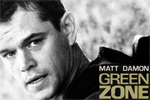The subject, inspired by the book “Imperial Life in the Emerald City: Inside Iraq’s Green Zone” written by Rajiv Chandrasekaran, relates the coalition’s takeover following the swift victory of allied troops and the conquest of Baghdad.
The Green Zone was the area around the Republican Palace from which the Iraqi dictator commanded, and which later became the Headquarters of the provisional government set up by the Pentagon. The film’s plot focuses on the search for weapons of mass destruction that Saddam Hussein’s regime was alleged to possess, which at the time politically justified the military intervention.
It has since been known that these weapons never existed and that it was merely a vast “intelligence” operation that, favoring the interventionist faction of the Pentagon over the more cautious Department of State, allowed an ideologically and geopolitically motivated decision to pass as a preventive defense objective in the eyes of American and international public opinion.
We will not revisit these events which, although captivating, require much more than a mere film critique and which, moreover, never reach the level of this debate, getting mired in a scenario that is part-western, part-stargate, of distressing banality.
Thus, we will remain with the memory of a failed film, which could have conveyed and represented many things but ultimately limits itself to a series of preconceived actions without genuine emotions. It is true that this kind of storyline requires much more distance than the few years passed (the events date back to 2003) for a historical analysis to be conducted without slipping into current affairs, even if belated.
And ultimately, this is the major fault of director Paul Greengrass: Having made a film that wanted to go beyond a mere action film but without achieving the necessary scope.


